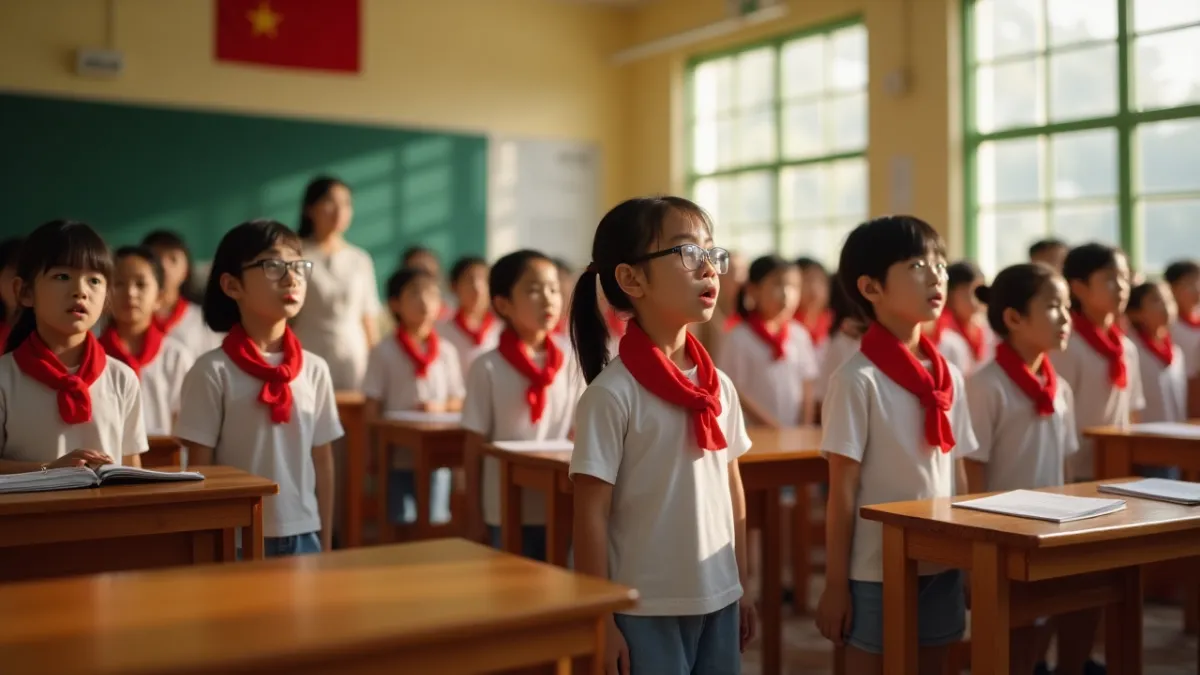In a bold move to curb digital distractions and foster a more focused learning environment, Ho Chi Minh City (HCMC) has announced plans to prohibit students from using mobile phones on school premises starting from the 2025–2026 academic year. The policy, which will apply even during recess unless explicitly permitted by teachers, signals a significant shift in Vietnam’s approach to technology in education and could pave the way for broader national reforms.
A Response to Growing Digital Distraction
The initiative, spearheaded by HCM City’s Department of Education and Training, aims to address the pervasive issue of smartphone overuse among students. Nguyễn Văn Hiếu, director of the department, emphasized the dual goals of the policy: enhancing classroom concentration and encouraging physical activity and face-to-face interaction during school hours.
Under the proposed rules, schools will be encouraged to organize structured activities such as sports and team games during recess. This shift is intended to help students build social connections and maintain physical health, countering the sedentary habits often associated with excessive phone use. Several schools in HCMC have already trialed similar no-phone policies, with school leaders noting positive outcomes. While initial resistance from students was common, many eventually adapted, becoming more attentive in class and more interactive with peers during breaks.
Public support for the measure appears strong. A survey conducted in October 2024 revealed that approximately 83 percent of nearly 3,600 respondents endorsed the idea of banning phones in schools. This widespread backing reflects growing concerns among parents and educators about the impact of digital devices on young people’s academic performance and mental health.
Policies of Other Nations
In Australia, a Government ban on mobile phones in classrooms and in the playgrounds has made the world of difference. Australian Federal Minister for Education Jason Clare said “Our ban on mobile phones … are improving behaviour in classrooms” and in another statement said “There are less distractions in the classroom and playgrounds are noisy again. Children are being children.”
The use of mobile phones in schools was initially seen in Australia as a safety measure– children being able to contact parents or police in case of emergency was seen as a way to address after and before school safety concerns. However mobile phone use quickly spiraled out of control with childred more focused on social media than classroom based learning.
Australia’s Health Minister Mark Butler amplified policies set out by the government to safeguard children and said “The [Government] is protecting young Australians from the harms that come with social media, and supporting mums, dads, and carers to keep their kids safe.”
“Across developed nations Governments are taking action to ensure that children remain focused and receive the right type of education and that’s no different here in Vietnam. We want children to learn the national curriculum and achieve key learning outcomes” said one school teacher that Broadsheet Asia spoke with.
Contrasting with National Guidelines
HCMC’s forthcoming policy stands in stark contrast to the current guidelines set by Vietnam’s Ministry of Education and Training. At present, students are permitted to use phones during lessons if approved by teachers, and there are no restrictions on usage during break times. The city’s decision to tighten these rules underscores a proactive stance on an issue that has sparked debate across the country and beyond. If successful, this local initiative could serve as a model for nationwide reform, prompting other regions to reconsider their approach to technology in educational settings.
Global Concerns Over Screen Addiction
The concerns driving HCMC’s policy are not unique to Vietnam. A 2023 study by UNESCO, which analyzed data from 14 countries, highlighted the detrimental effects of smartphones on students’ academic focus and emotional well-being. The research found that excessive phone use is linked to heightened levels of anxiety and depression, making it more challenging for students to re-engage with learning after prolonged screen time. UNESCO has since urged governments worldwide to impose restrictions on smartphone use in schools to minimize classroom disruptions and shield children from online risks such as cyberbullying.
Experts have proposed a range of reforms to address these issues, including the establishment of phone-free schools, delaying smartphone ownership until high school, and limiting access to social media platforms until age 16. These recommendations aim to balance the benefits of technology with the need to protect young people from its potential harms, fostering greater real-world independence and resilience.
Several countries have already taken steps in this direction. Nations such as France, Greece, Hungary, and Denmark have implemented stricter regulations on phone use in educational environments, with policies ranging from outright bans to designated phone-free zones within schools. These measures have often been met with mixed reactions, but early data suggests improvements in student engagement and a reduction in classroom distractions.
Challenges and Opportunities Ahead
While the rationale behind HCMC’s policy is clear, its implementation may face hurdles. Students accustomed to constant connectivity might resist the ban, viewing it as an infringement on their personal freedom. Teachers and administrators will also need to navigate the logistics of enforcement, ensuring that exceptions for educational or emergency use are clearly defined and communicated. Moreover, schools will require adequate resources to provide alternative activities during recess, a challenge for institutions already stretched thin.
Yet, the potential benefits of the policy are significant. Beyond improving academic focus, reducing screen time could help mitigate the mental health challenges increasingly associated with smartphone and social media addiction among young people. By prioritizing in-person interaction and physical activity, HCMC’s initiative seeks to nurture a generation of students better equipped to thrive in both academic and social spheres.
The broader implications of this policy extend beyond the classroom. As technology continues to permeate every aspect of daily life, striking a balance between digital engagement and real-world connection becomes ever more critical. HCMC’s experiment with a phone-free school environment could offer valuable insights into how societies can adapt to the challenges of the digital age without sacrificing the well-being of their youngest members.
A Precedent for Vietnam?
As HCMC prepares to roll out its mobile phone ban in the 2025–2026 academic year, the eyes of educators, policymakers, and parents across Vietnam will be on the city. Success here could inspire other regions to adopt similar measures, potentially leading to a nationwide reevaluation of how technology is integrated into education. Conversely, any significant pushback or unintended consequences might temper enthusiasm for such reforms, prompting a more cautious approach.
For now, the initiative represents a bold step toward addressing a pressing modern challenge. Whether it will achieve its goals of enhancing focus, fostering connection, and protecting student well-being remains to be seen. As the policy unfolds, its impact on HCMC’s students could shape the future of education in Vietnam—and perhaps beyond.
With the academic year 2025–2026 on the horizon, the debate over technology in schools is far from over. How HCMC navigates this transition may well set the tone for how Vietnam, and other nations, grapple with the double-edged sword of digital innovation in the years to come.
















